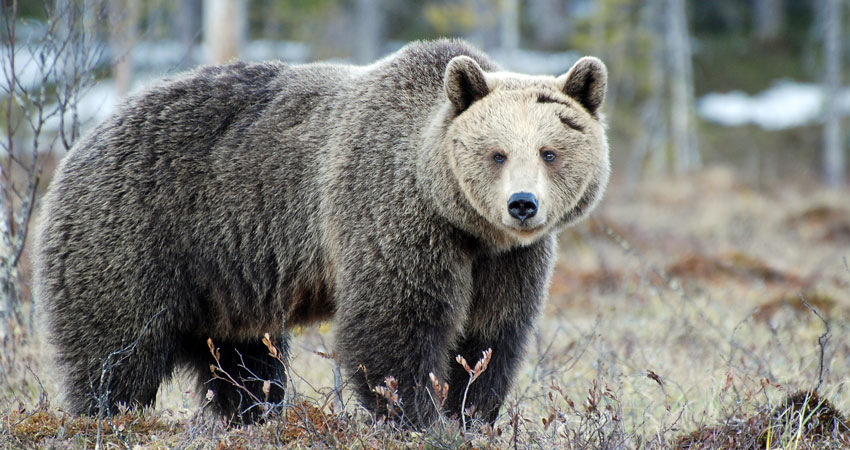 Foto: Lars Wiklund
Foto: Lars WiklundWildlife
Mammals that have become established in the national park since its formation in 1984 are beavers, grey seals and bears. Muskrats also have been encountered.
They probably have spread through Bothnia Bay from Finland. Beavers and grey seals are seen frequently, while bears are less common.
Other mammals that frequent the park are elk, roe deer, hares, squirrels, foxes, badgers, martins, ermines and minks. Naturally, bats and various small rodents also are present.
Birds
The national park is home to both great spotted and lesser spotted woodpeckers as well as black and grey-headed woodpeckers.
The grey-headed woodpecker is the landscape bird of the historical province of Ångermanland and is not unusual in the national park. Red-throated divers have a good, undisturbed breeding environment in the small, pike-free tarns in the park. Cranes breed in the central part of Skuleskogen, where marshes are more prevalent.
Birds of prey include honey buzzards, rough-legged buzzards and ospreys. White-tailed eagles are spotted with increasing frequency in parts of the park near the coast.
Fish
The main fish species to be found in Skuleskogen’s lakes and tarns is perch. Salmon trout and river lamprey migrate upstream and spawn in the lower part of Ävdalsbäcken (Viksbäcken), albeit in small numbers.
Whitefish, salmon trout, Baltic herring, pike, perch and fourhorn sculpin are the primary fish found in the sea. The inner portion of Kälsviken cove is an important recruitment area for whitefish and salmon trout. Perch and pike spawn in Salsviken cove.
Insects
Skuleskogen National Park is one of the few places in Sweden where the flatheaded pine borer occurs. It depends on warm pine forests, and therefore it flourishes here.
Share with your friends
Share this page with your friends on Facebook, X (formerly Twitter), Google+ and e-mail.





